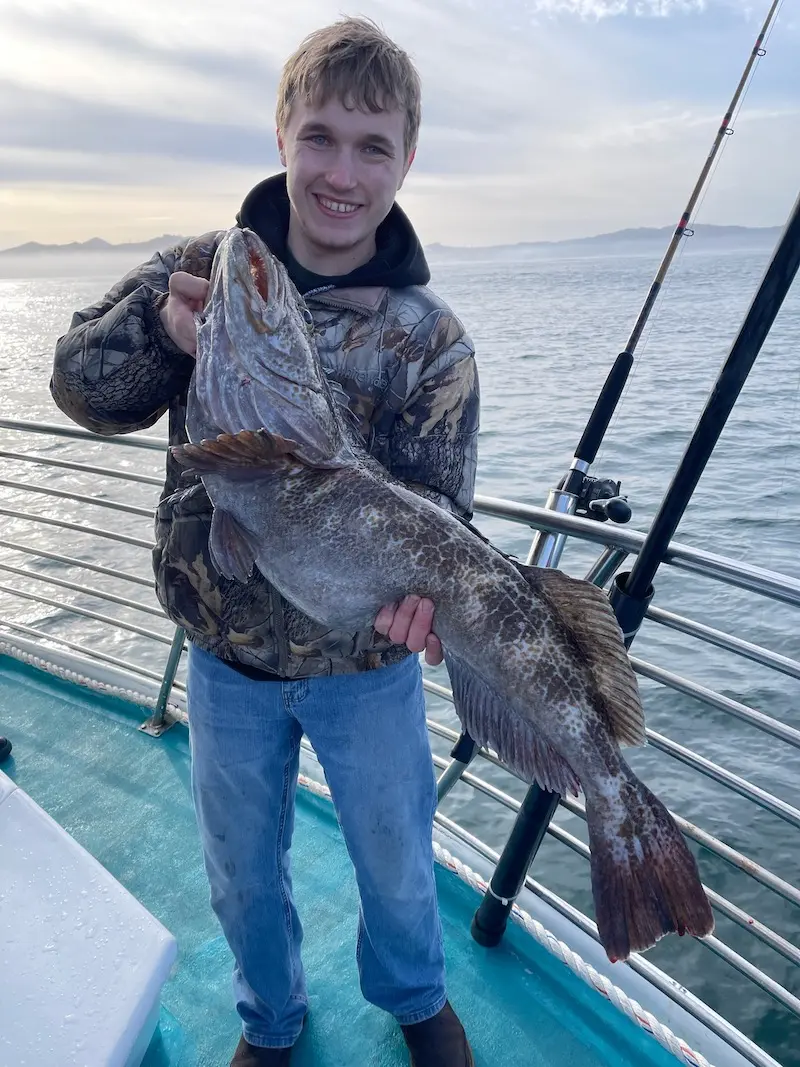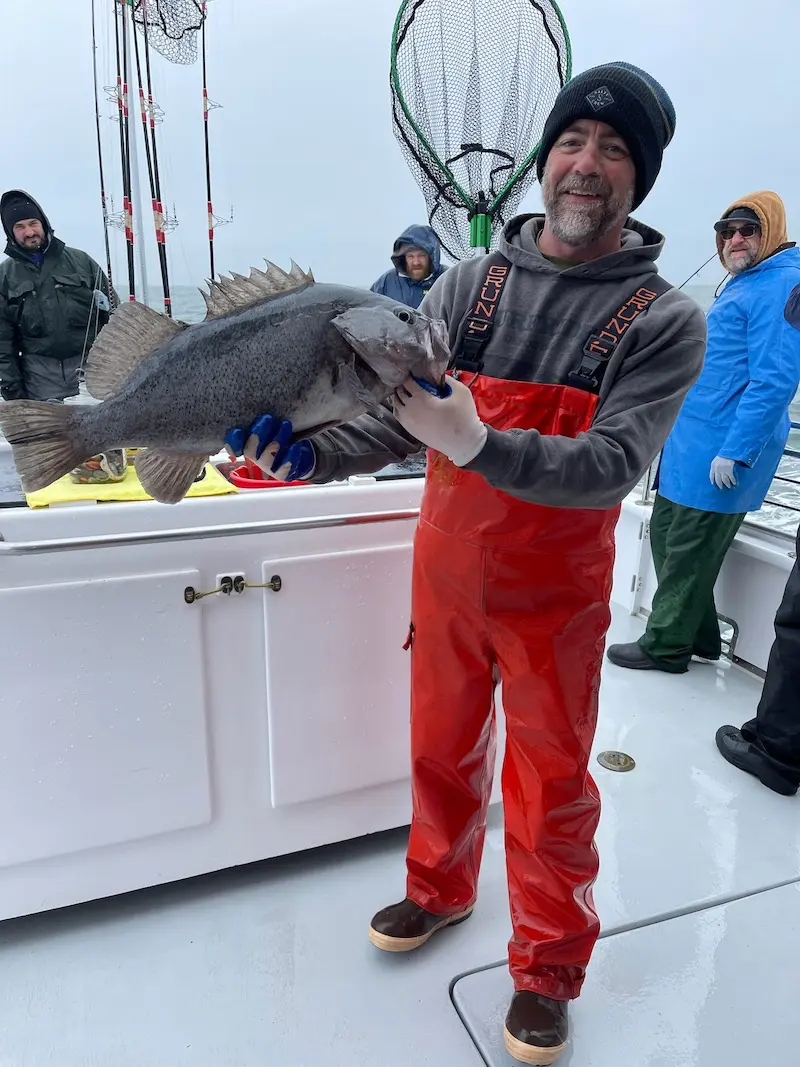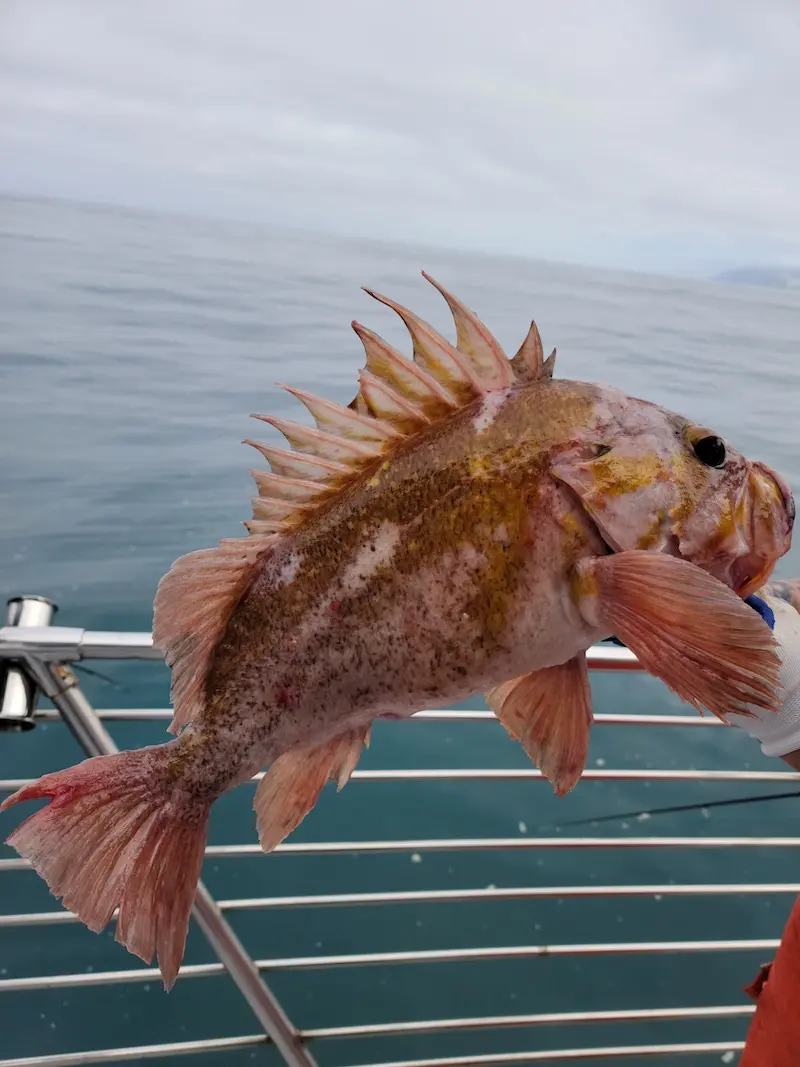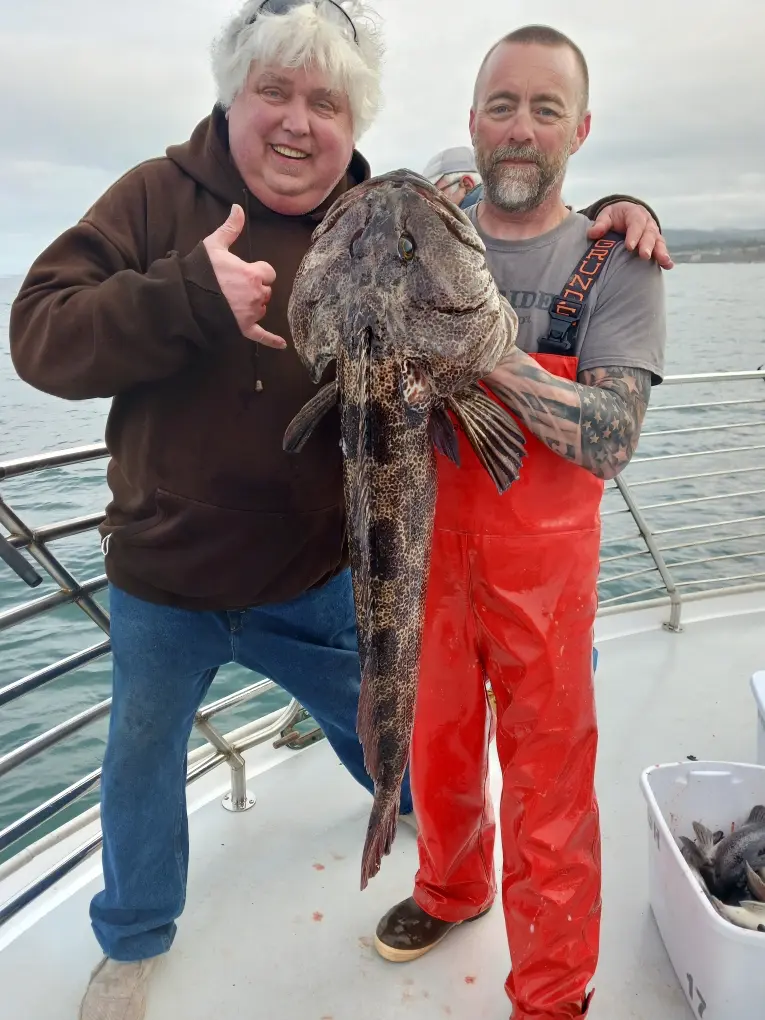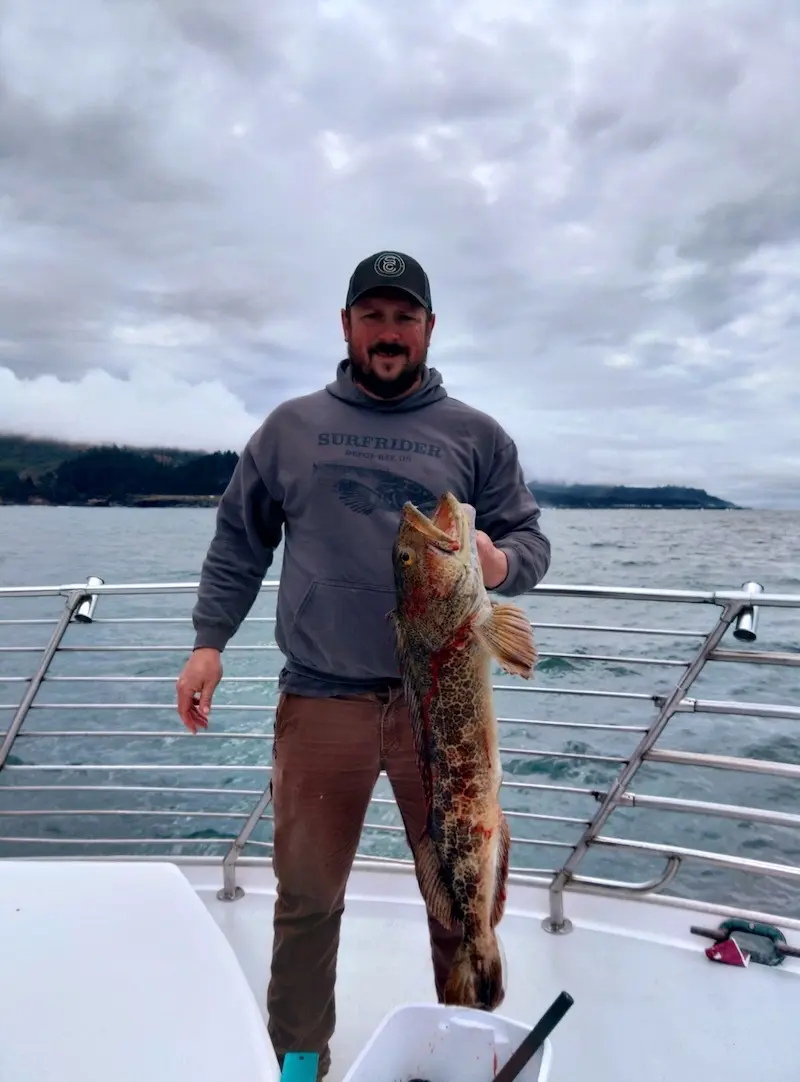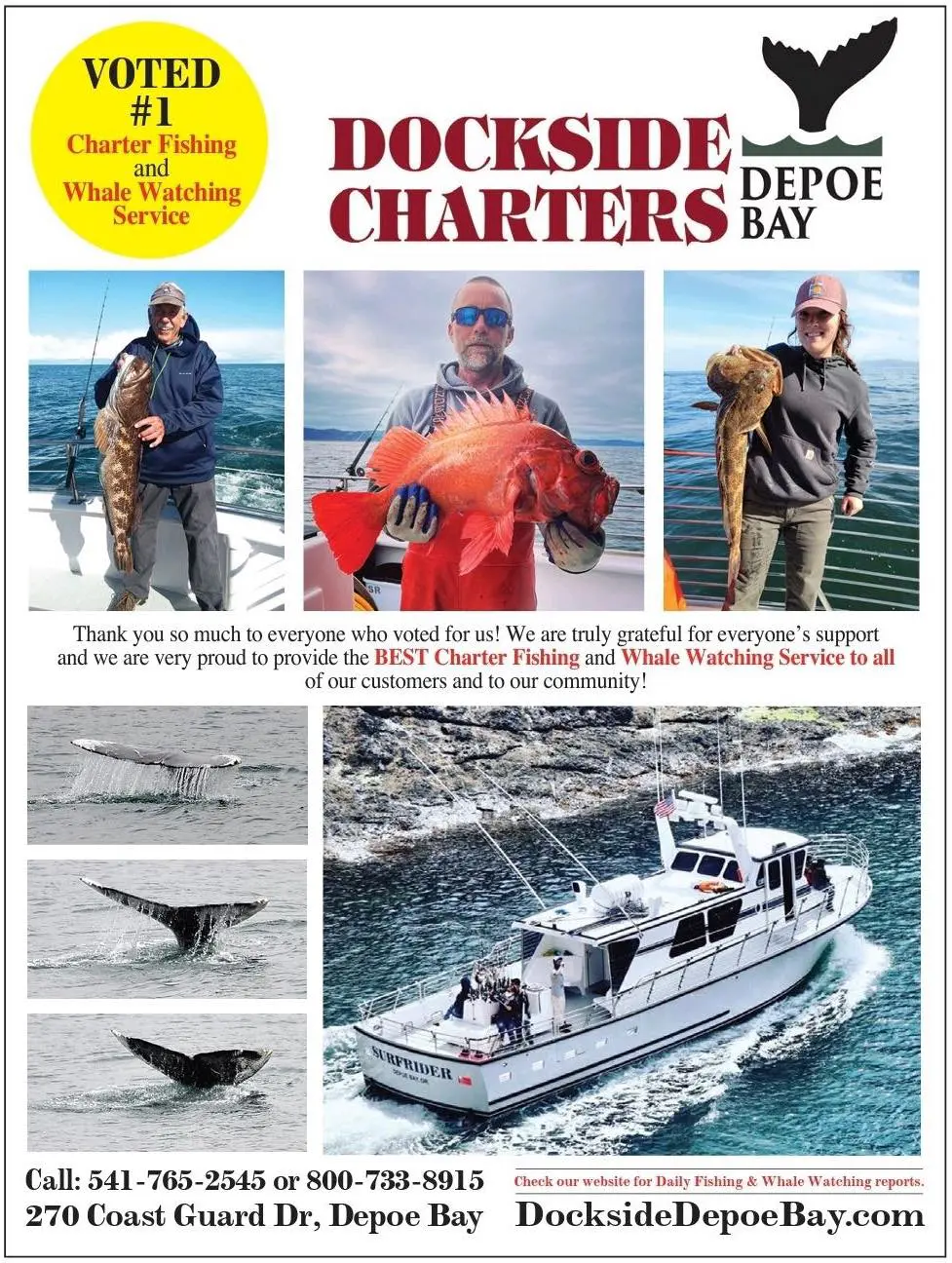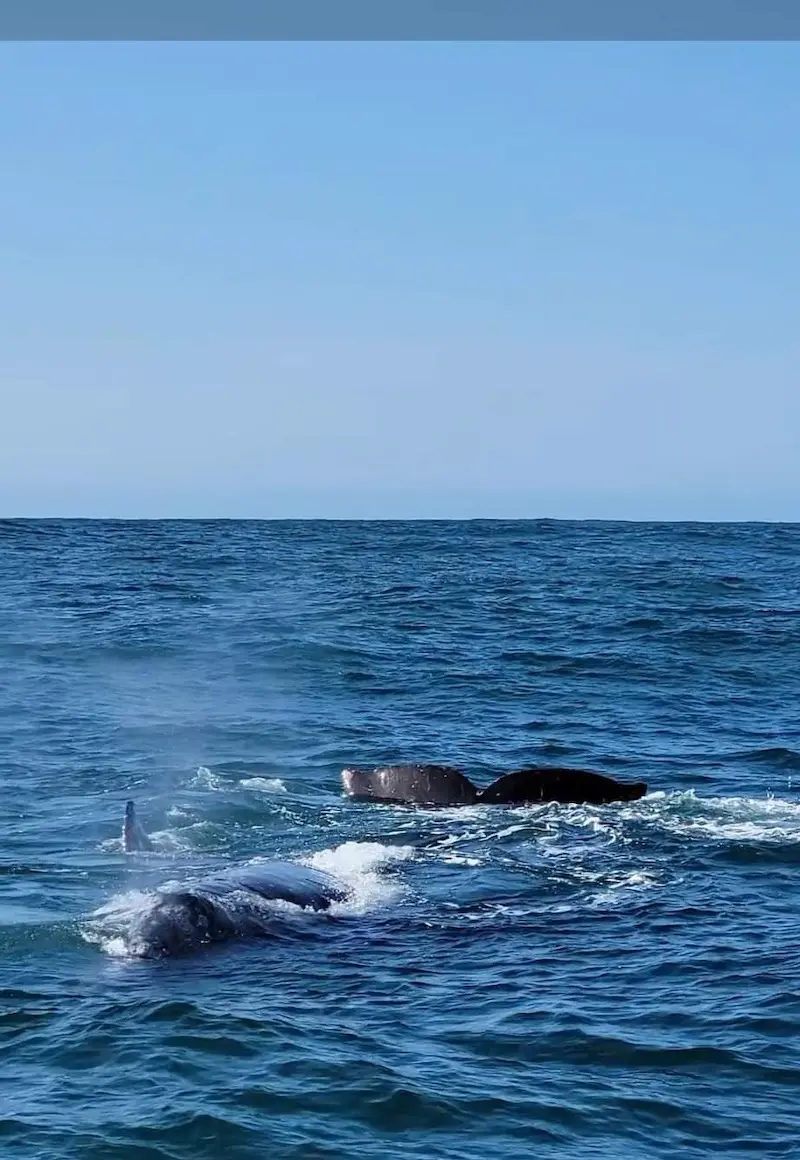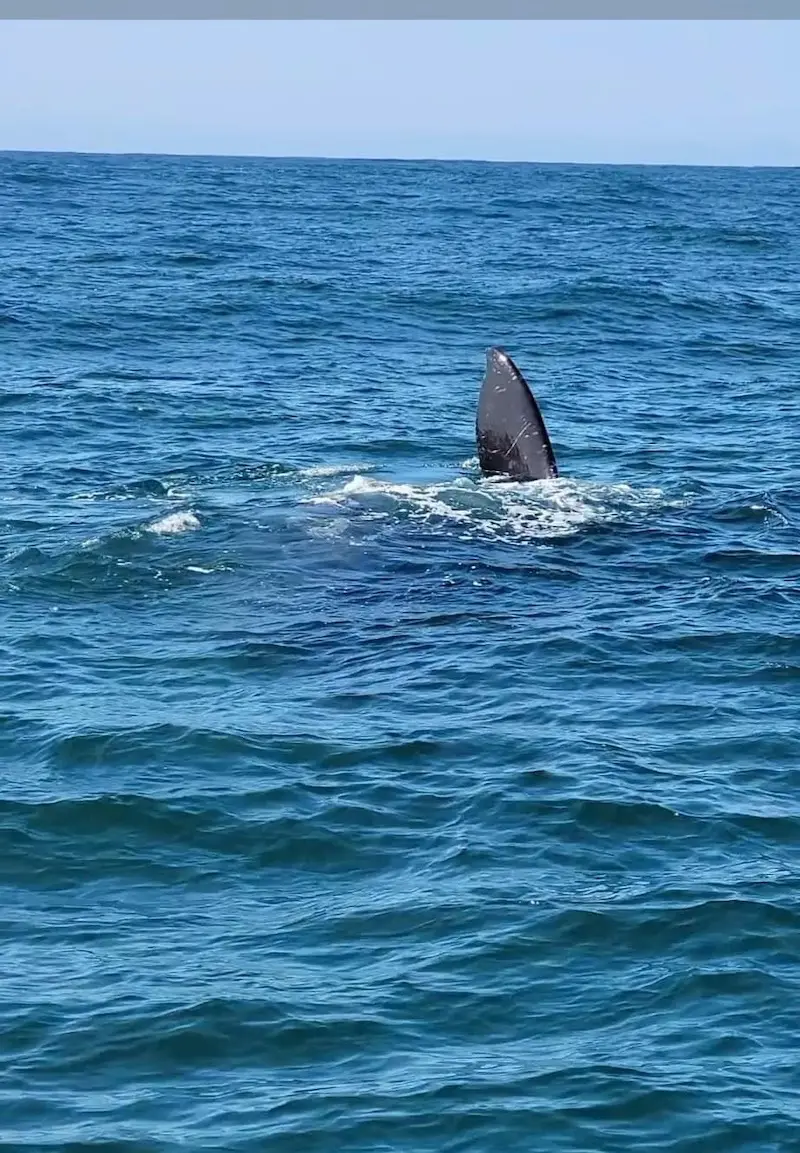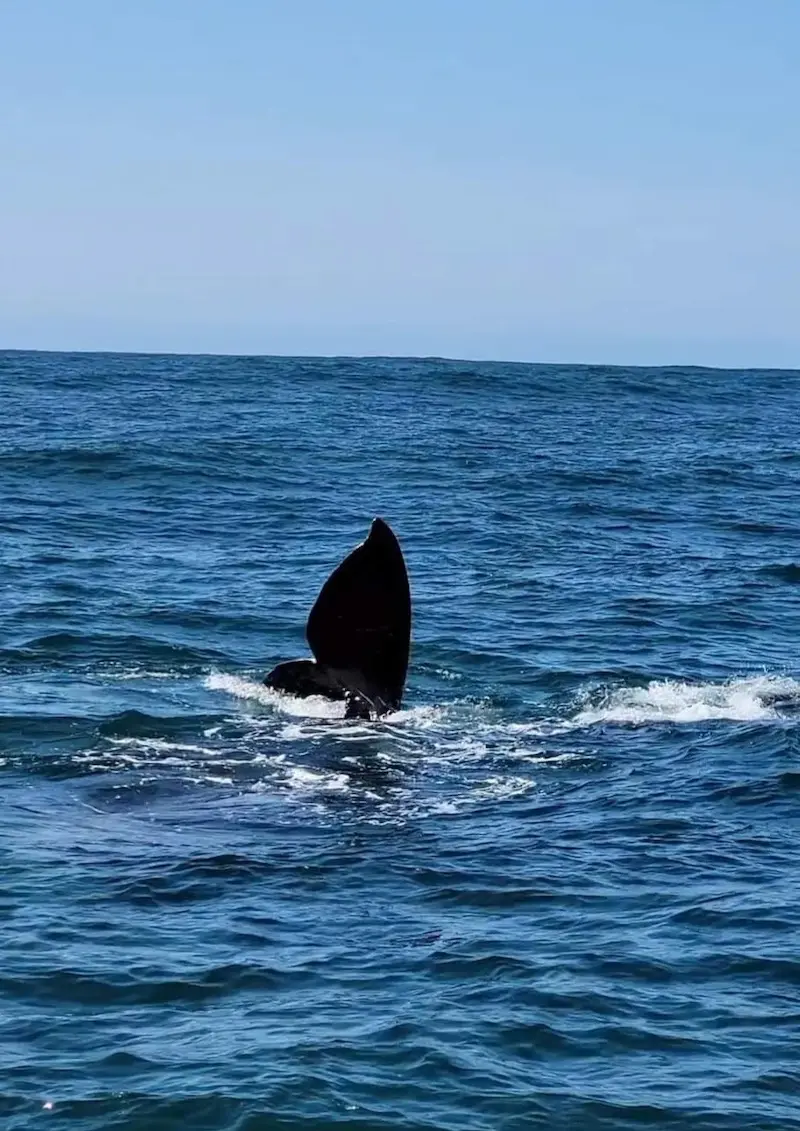Depoe Bay Whale Watching and Charter Fishing
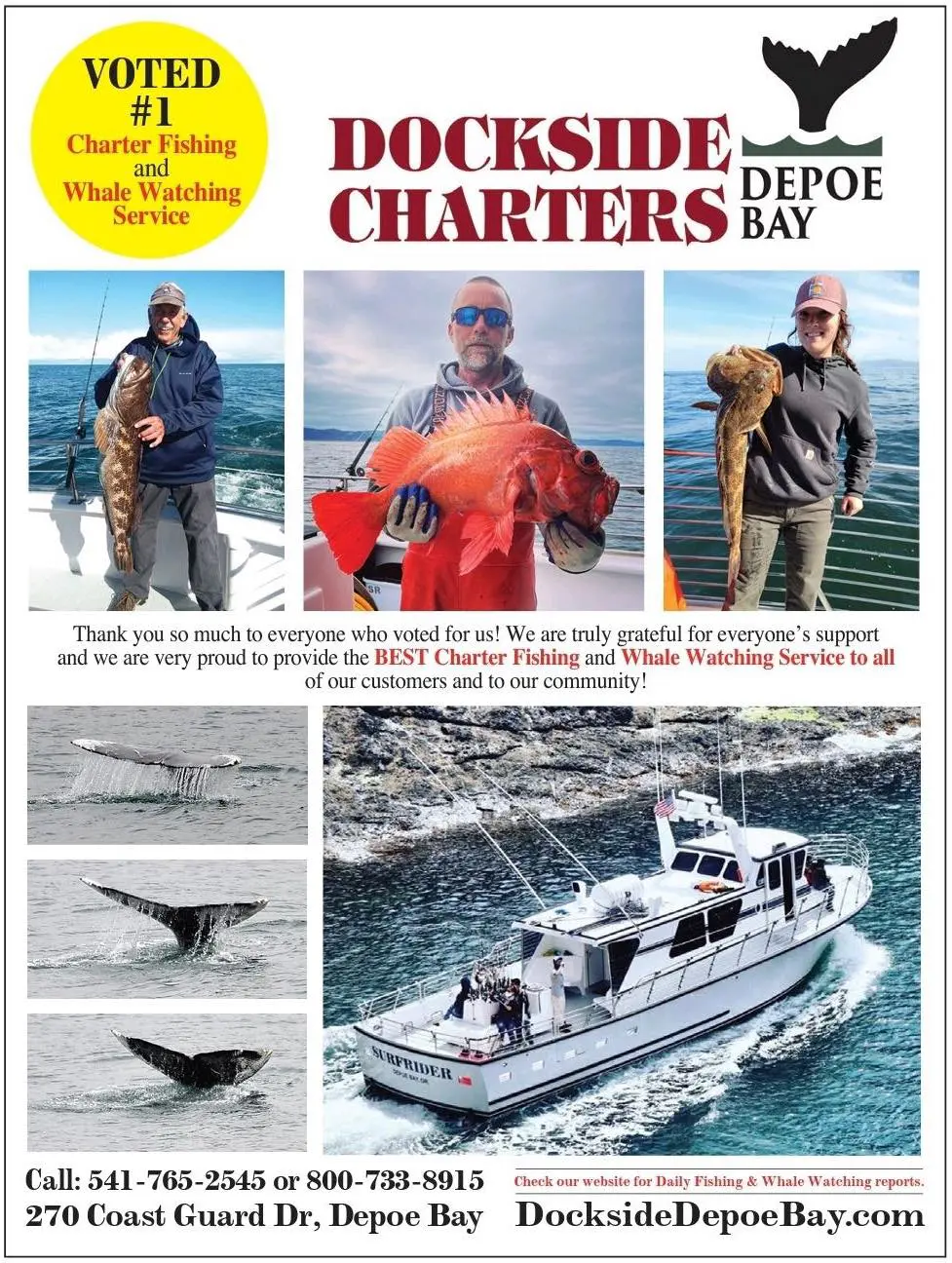
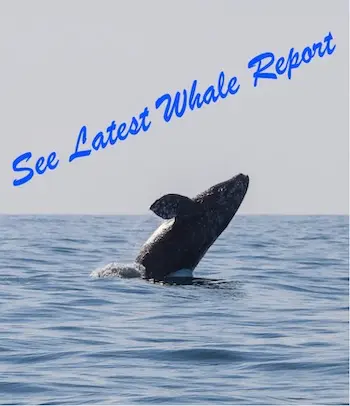
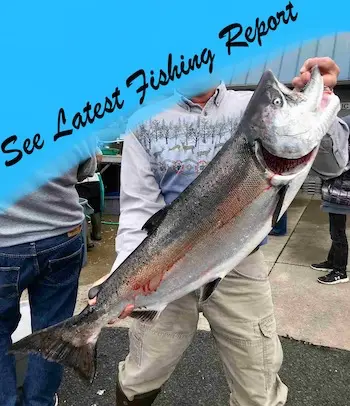
"The Fisherman's Choice"
Like us on Facebook!
Book online now.
Oregon's Premier Charter Service
Book Online for Discount on Whale Watching!
Ocean Fishing Adventures!
Whale Watching and Sight Seeing Cruises!
Excursions available daily.
(weather permitting)
Whale Watching Tours
Dockside Charters offers exciting whale watching and sight seeing excursions on a daily basis, weather permitting. Starting in late December we offer 1 1/2 hour cruises, during the migration it takes longer to find the whales. In springtime we run 1 hour cruises. We take our excursions on the biggest, cleanest, best maintained fleet of Delta Charter boats on the coast. The boats decks are elevated above the water enough to provide excellent lines of sight for viewing. They have cabins with inside seating, seating out on deck and you can move all the way around the boat on deck. The boats have access doors so there is no climbing up steps and over railings, simply walk on and walk off. Our excursions are more interruptive tours rather than just boat rides. The captains and crews are very knowledgable and readily share that information about whales and local history. In addition to the opportunity to see whales and other marine life it is a way to see our spectacular coastline from a perspective you get from nowhere else. An excursion with Dockside Charters is great affordable exciting family entertainment. We are ready to entertain you. Our whale watching season begins in late December and goes through late October.Rockfish and Ling Cod Fishing Trips
Five hour bottom fishing trips utilize relatively light tackle and produce a lot of bang for the buck. The depth ranges from thirty feet on shallow reefs out to deeper reefs of 240 feet deep. Ling Cod are an aggressive apex predator, a hard fighting fish that are highly prized to eat as well because they are always mild flavored, moist and tender. Rockfish make up the majority of the catch on Bottom Fishing trips. Rockfish species likely to be seen are Black Rockfish, Blue Rockfish, Deacon Rockfish, Canary Rockfish, Yellow Tail Rockfish, Vermillion Rockfish, China Rockfish, Copper Rockfish, Quillback Rockfish, Yellow Eye Rockfish (may not be retained) and finally two fish that are not Rockfish but are counted as part of the Rockfish bag limit, the Kelp Greenling and Cabezon. Rockfish are an interesting category of fish, of 130+ species known world wide 97 are found in Northeastern Pacific of those only about a dozen are accessible with hook and line. Though all Rockfish are a firm white meated fish each has subtly different flavors. Some of the Rockfish such as Blue Rockfish are relatively fast growing, maturing to reproduce in 5-6 years and living 15-18 years. Comparatively the Yellow Eye Rockfish is very slow growing. It doesn’t mature to reproduce until 20-25 years and has been documented to live to 150 years. Bottom Fishing is open year round although it is quota driven.
Crabbing is a popular addition is to the Bottom Fishing trips and the season is open December to October.Deep Water Ling Cod and Rockfish Fishing Trips
September through May marks the deep water season for Ling Cod and Rockfish. During that time frame fishing for those species is allowed outside the 40 fathom curve. Eight hour trips using heavy tackle to fish from 80 to 100 fathoms depth (480-600 feet deep) can produce larger fish. Bag limits remain the same as the near shore fishery, two Ling Cod and six Rockfish. Because of the distance offshore to the deep water areas it is a weather sensitive fishery. Because of the heavy tackle, deep water and being a longer trip going further offshore (15-25 miles) it is not recommended for beginners.Long Leader Fishing Trips
The Long Leader Fishery is relatively new. It began as an EFP (experimental fishery program) over a decade ago to develop gear types that would allow targeting fish suspended off the bottom without impacting an endangered specie, the Yellow Eye Rockfish. The Yellow Eye is a hard on bottom dweller and the long leader fishery was developed to avoid bottom contact and avoid impacts on the Yellow Eye. The gear has a lead weight at the bottom with a leader 30 feet long to the first hook. The EFP proved to be so successful that the Oregon Department of Fish and Wildlife presented a proposal to federal fisheries managers to allow adoption of the Long Leader Fishery. After several years and no small amount of lobbying the fishery was adopted. It is a year round fishery for specific Rockfish only. No Ling Cod may be retained in the Long Leader fishery but the Rockfish tend to be larger than the inshore fishes and the bag limit is ten. Depth of the fishery is also 80-100 fathoms and is much more weather dependent than inshore fisheries.Halibut Fishing Trips
Halibut fishing is regulated by the International Pacific Halibut Commission (IPHC). The Pacific Halibut is a highly migratory species that ranges on the continental shelf from Northern California to Alaska but is concentrated in the Gulf of Alaska and Bering Sea. From November to March mature Halibut concentrate annually on spawning grounds along the edge of the continental shelf at depths from 600 to 1500 feet. Halibut are strong swimmers and able to migrate long distances. The migratory pattern of all ages and sized fish is predominantly clockwise from northwest to southeast. The Oregon Halibut fishery is highly regulated and is split into two fisheries, the all depth fishery and the nearshore. The nearshore fishery is open from May until October seven days a week but is restricted to allow fishing only inside the 40 fathom curve (240 feet). The all depth fishery also opens in May but is restricted to Thursdays, Fridays and Saturdays, but not all Thursdays, Fridays, and Saturdays. On all depth days the same regulations apply at all depths with regard to retention of Rockfish and Ling Cod. (Confused yet? Keeping up with the regulations is a full time job.) The all depth fishery has the potential of being open into October but both the nearshore and all depth fisheries are quota dependent and will be closed when those quotas are reached. The all depth fishery is consistently the most productive of the two. Both require heavy tackle and the all depth is very physically demanding and more weather dependent than the nearshore. The all depth fishery ranges from fifteen to forty miles offshore.Salmon Fishing Trips
Salmon Fishing, though it has diminished from what it used to be still remains synonymous with saltwater fishing. There are two predominant species in this part of the Pacific, the Chinook (also called King Salmon or Kings) and the Coho (also called Silver Salmon or Silvers). Chinook Salmon season typically opens March 15th however in our area it usually isn’t productive until at least April 15th. Strong powerful fish as fighters and rich flavorful meat high in Omega 3 fatty acids make the Chinook a highly desirable fish. Coho Salmon season typically starts the 3rd Saturday of June. Coho tend to be more of a schooling fish than Chinook and the action can be crazy when they are on the bite. All Salmon feed actively when preparing for their spawning runs. The larger stronger fish are the most successful spawners. Coho particularly are voracious feeders and during the peak season average a pound a week of growth as they prepare for spawning. Trolling for Salmon is the most popular method employed to catch them. As it is being trolled the terminal gear is weighted or used with a diver to keep the gear at specific levels in the water column. Coho can be exciting fighters as they usually fight near or on the surface with considerable splashing and jumping. The comparison can be made that Coho tend to be like a playground full of third graders, there is lots of activity, noise and confusion. Chinook are more like grad students at the university, they are occasionally seen on campus but no one really knows what they are doing. Chinook may be either hatchery or non hatchery fish to be retained but must be over 24 inches. Coho must be hatchery fish to be retained and minimum length is 16 inches. Often there is a late season opportunity to retain non-hatchery Coho.Tuna Fishing Trips
Albacore Tuna constitute a popular fishery in Oregon waters. Strong, fast fighters and also a highly migratory species. They are a delicious fish to eat and can be prepared in a variety of ways: as sushi, grilled , baked , seared and can be stored Vacuum packed and frozen or canned. Dockside offers twelve hour Tuna trips ranging from twenty to forty miles offshore. Prime time for tuna is most often from mid-July through mid-September and because of the distance offshore is weather dependent. The migratory pattern of the Albacore is a huge clockwise circle starting at the spawning areas southeast of Japan and bringing them along the US coastline annually. Tuna are warm blooded fish with a very high metabolism requiring high volumes of food. They are usually close schooling fish and when they are on the bite the action can be fast and furious. As warm blooded fish they require specific care when caught to assure top quality. They must be immediately pithed, bled, chilled and put on ice. The Tuna fishery is an exciting fishery but represents a long hard day on the water. Not recommended for first time saltwater fishermen.Coho/Bottom/Crab Trips
The 8-hour triple combo trip is a great way to experience a variety of fishing in one day. You'll start by dropping crab pots on the way out to your fishing spot. Then, you'll spend half the day fishing for salmon and the other half bottomfishing. On the way back in, you'll pick up your crab pots.
This trip is perfect for small groups of up to 6 people. It's a great way to bring home a variety of fish, especially during the selective coho salmon season. The trips leave at 6:00 AM and are available when coho season is open.
Here are some more details about the trip:
The trip includes all gear, bait, and tackle.
The captain is experienced and knowledgeable about the area.
If you're looking for a fun and exciting fishing trip, the 8-hour triple combo trip is a great option. You'll have a chance to catch a variety of fish, and you'll make memories that will last a lifetime.
Crab fishing: Crab pots are baited and dropped into the water on the way out to the fishing spot. The crabs will be attracted to the bait and will enter the pot. When you return, you can pull up the crab pots and harvest your catch.
Salmon fishing: Salmon fishing is a popular activity in many parts of the world. Salmon are anadromous fish, which means they live in the ocean but return to freshwater to spawn. They are known for their strong fighting spirit and delicious meat.
Bottomfishing: Bottomfishing is a type of fishing that involves fishing near the bottom of the ocean.
Go Deep Sea Fishing with Oregon's Premier Fishing Charter Dockside Charters in Depoe Bay, Oregon.
Clean Comfortable Well Maintained Boats for the Best Fishing & Whale Watching Adventures
We also offer Dungeness Crab options with all ROCKFISH AND LING COD TRIPS.
You can Deep Sea Fish year round with Dockside Charters. Seasonal opportunities fishing for Ling Cod & Rock Fish (bottom fishing), Halibut, Salmon and Albacore Tuna fishing. We also offer Dungeness Crab fishing options with some deep sea fishing trips.
Fishing on the Oregon Coast offers a great deal of variety. Seasonally we have fishing for all your favorites. For more information on the types of fishing trips that are available check our fishing season info page. For in depth fishing information check our Daily Fishing Report.
A picture is worth a thousand words so look at the results of our fishing trips in the gallery.
Oregon angling license required for all fisheries
Located in Depoe Bay Oregon
GIFT CERTIFICATES available for all services. Please call our office (541) 765-2545



.webp)
